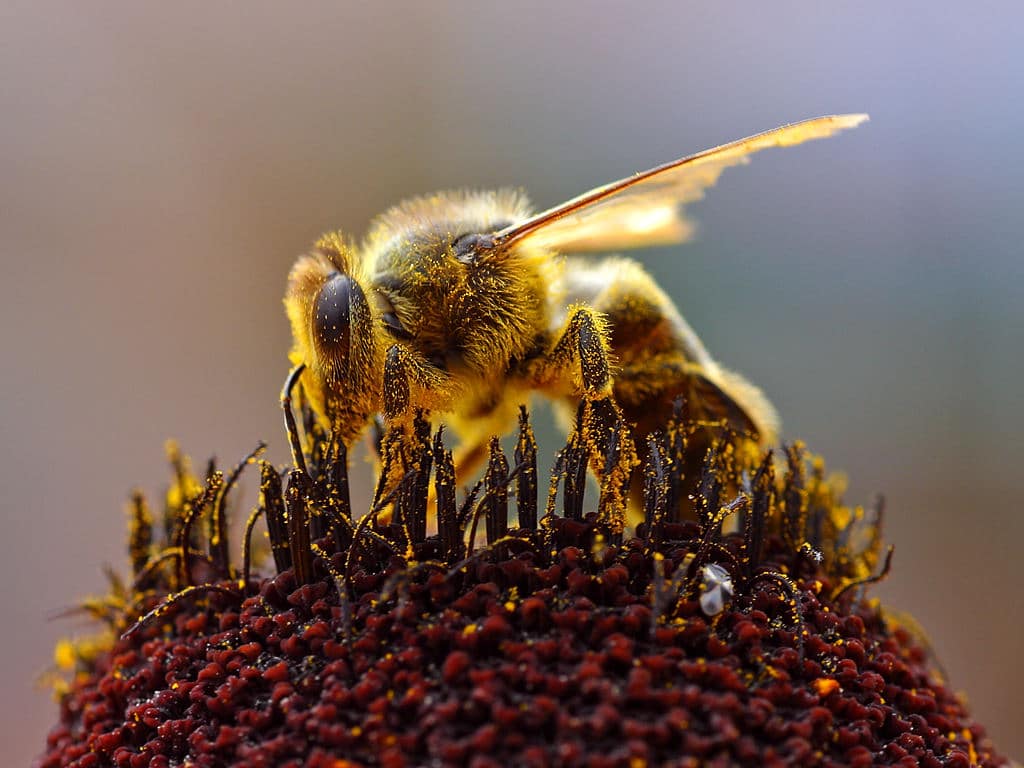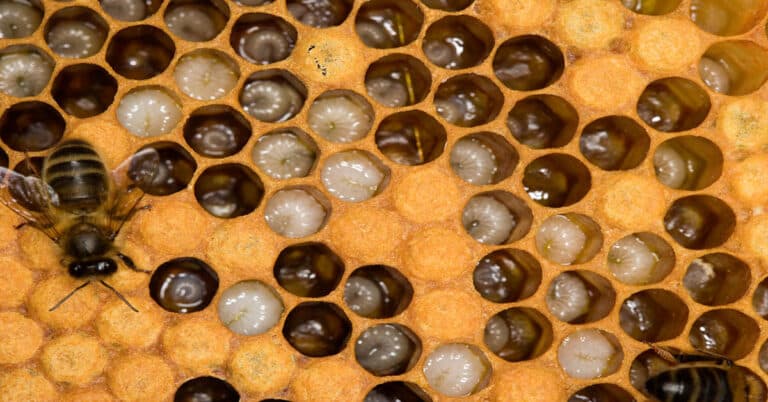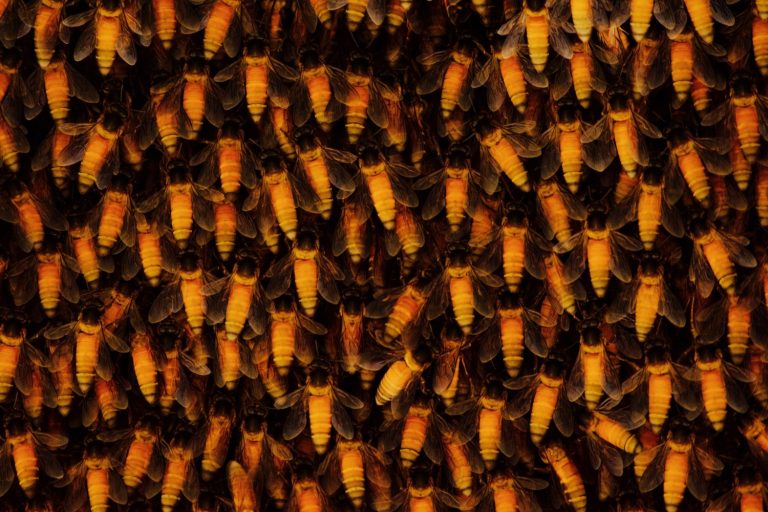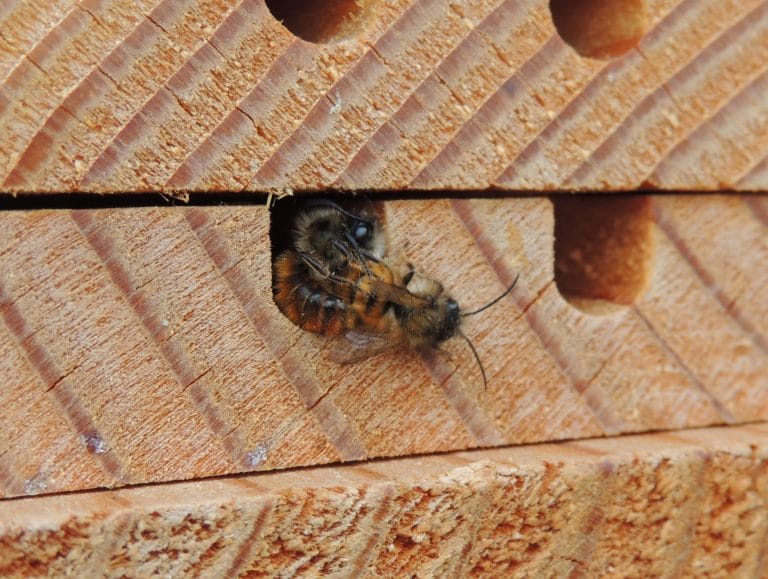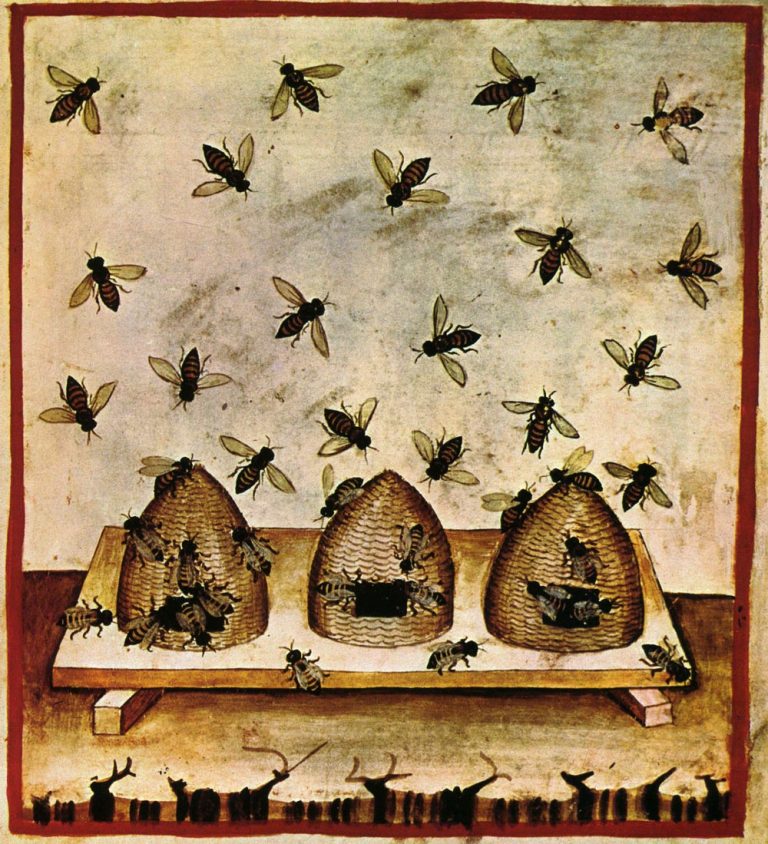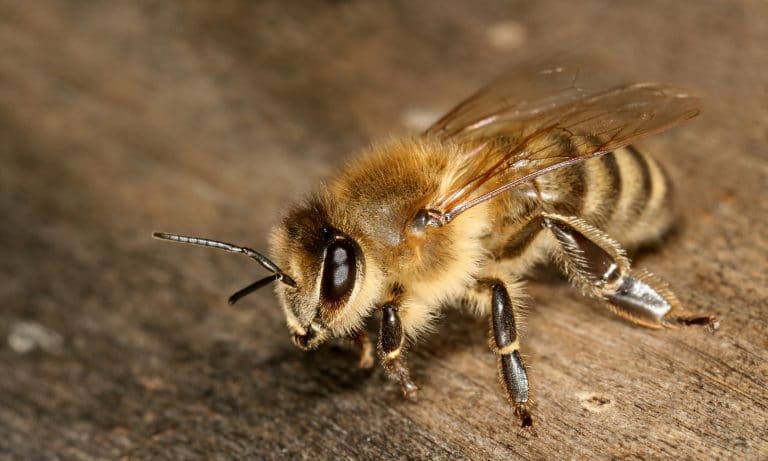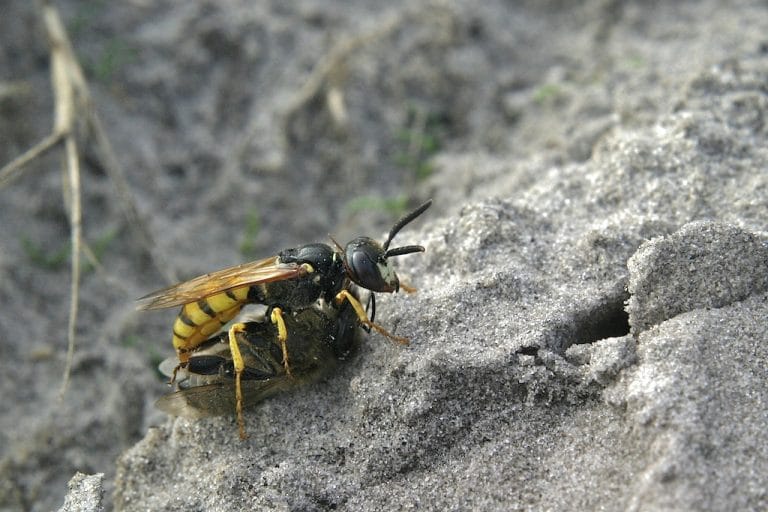Honey Bee
Scientific Classification
| Kingdom: | Animalia |
| Phylum: | Arthropoda |
| Class: | Insecta |
| Order: | Hymenoptera |
| Family: | Apidae |
| Subfamily: | Apinae |
| Tribe: | Apini |
| Genus: | Apis |
| Species: | Subgenus Micrapis |
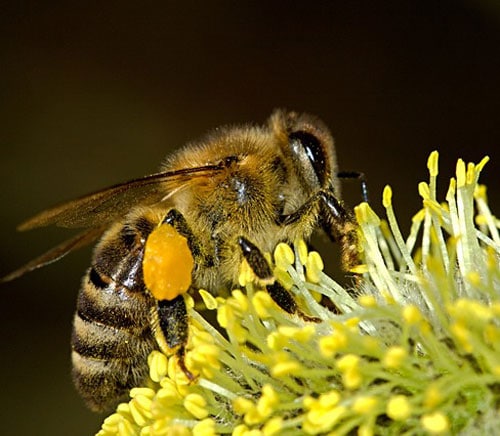
Honey bees (or honeybees) are a separate division of bees in the genus Apis, principally distinguished for its stocking and producing honey and making colonial, perennial nests from wax. Among all the genus Apis, honey bees are the lone surviving members of the clan Apini. Presently you have only seven species of acknowledged honey bees along with an entire number of the 44 sub-species even though in terms of history, you can find 6 to 11 acknowledged types. Of all the known varieties of around 20,000 bees, honey bees represent just a small fraction. Other types of connected bees also make and store honey, however, the real bees belong to the genus Apis.
Anatomy
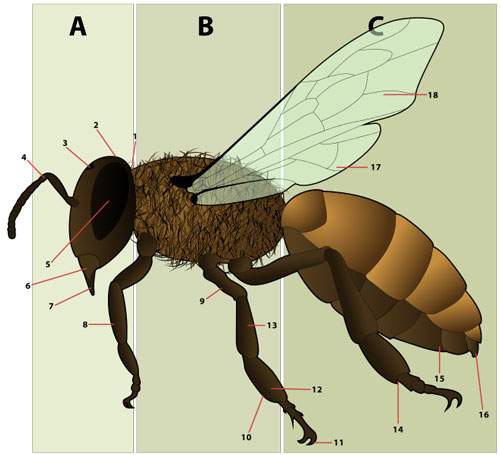
A: Head, B: Thorax, C: Abdomen 1: Gena, 2: Vertex, 3: Ocelli, 4: Antenna, 5: Compound Eye, 6: Feelers, 7: Proboscis, 8: Foreleg, 9: Femur, 10: Middle Leg, 11: Tarsal Claw, 12: Tarsus, 13: Tibia, 14: Hind Leg, 15: Sternum, 16: Sting, 17: Hind Wing, 18: Forewing
- Shape: Oval bee shaped
- Size: ½”
- Wings: Yes
- Color: Golden yellow having brown band
- Legs: 6
- Antenna: Yes
- Apiology is the study of honey bees
Pollination
Agriculture to a great extant, relies on honey bees for pollination. Honey bees account for 80% of insect pollination. Without such pollination, the yield in vegetables and fruits are likely to witness a noticeable decrease.
Pollen
The pollen collected by bees in a year for one hive is 66 lbs.For the formation of plant embryo and for fertilization, all flowering plants produce pollen, which is the male germ cell. Pollen is one among the purest and richest form of food obtained in nature, honey bees feed on them. Pollen consist of the following: 35% protein, 10% carbohydrates, minerals, sugars, enzymes and vitamins A (carotenes), B5 (panothenic acid), B3 (nicotinic), B2 (riboflavin), B1 (thiamin), H (biotin), C (ascorbic acid), and R (rutine)
Honey
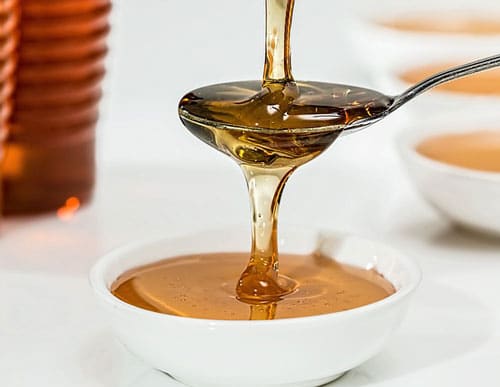
Throughout the year bees use honey for food. Based upon the resource of the nectar, there are several types, flavors and colors of honey. Bees collect nectar from flowering plants and trees from which they prepare honey. Honey is a genuine food and easy to digest, it has anti-bacterial qualities and honey is hydroscopic. Consuming local honey wards off allergies.
Beewax
The bees glands secrete beeswax. Honeybees use them for building their honeycomb. It is also used by human beings for furniture polishing, cosmetics, artists, drugs, materials and candles.
Propolis
This sticky resin is collected by the honeybees from trees when mixed with wax, gives a sticky glue and the bees repair and seal the cracks in their hive with this. Human beings use them as the base of fine wood varnish and as a health aid.
Royal Jelly
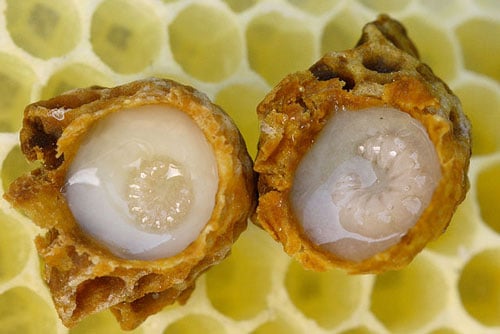
This wonderful milky substance changes a casual bee into a Queen Bee. They produce it by mixing honey and digested pollen or nectar with a chemical secreted from the gland in nursing bee’s head. It is high-priced in comparison with the imported caviar, a few use it as a fertility stimulant and dietary supplement. It packs vitamin B.
Bee Venom
The ‘ouch’ part of the honey bee: the natural reactions of a honey bee sting results in itching, slight swelling and severe pain. Some people are highly allergic to bee venom. Many people overseas and in the USA use “bee venom therapy” for taking care of problems related to health like neuralgia, high cholesterol, arthritis, high blood pressure and MS.
Other Interesting Bits of Information
The early colonists brought the honey bee to North America, these bees are originally from Europe and not native to the USA.
Honey bees are by nature not aggressive, unless excessively disturbed or for protecting its hive from an intruder, they will never sting.
Honey bees symbolize an exceedingly organized society. Each and every bee that occupies the hive has its own specified role to play through its life. For example, foragers, royal attendants, housekeepers, guards, undertakers, construction workers, grocers and nurses etc.
In honey bee colonies, the Queen Bee survives for many years, whereas the worker bee lives only for 1 ½ months while working hard a summer and for 4 – 9 months in winter.
Old cave paintings identify that the practice of bee-keeping and collection of honey goes back to the stone age. This process of honey bee hive is continuous. Even though during the winter they are quite inactive, they survive the during the months of winter by gathering themselves closely for warmth. These honey bees themselves control the internal temperature of the cluster and keep up the temperature to 930F in the center of the cluster during the winter (regardless of the outside temperature)
Three Castes Of Honey Bee
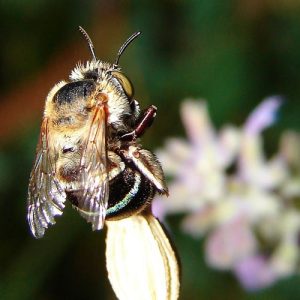
Queen Bee
In a single hive there is only one Queen. The honey bee with completely formed ovaries is the queen. This queen bee will survive only for 3-5 years. The queen bee mates though remaining fertile through its lifespan, mates only once, but with several male (drones) bees. In a day she lays as much as 2000 eggs. The unfertilized eggs develop into males (drones), and the fertilized eggs become females (worker bees). On the death of the queen bee after she becomes unproductive, the worker bees select a juvenile larva and feed it with “royal jelly” and “make” a new queen. It takes 16 days for a queen bee egg to hatch.
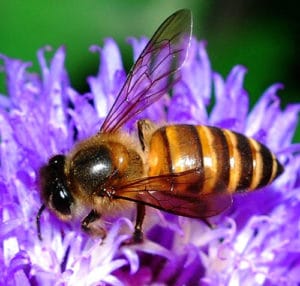
Worker Bee
All worker bees are females in spite of which they are incapable of reproducing. During the winter the worker bees survive for 4-9 months. But during the hectic months of summer (they literally work themselves to death) they survive for only 6 weeks. Almost all the bees in the hive are worker bees. In a hive there are more than 60,000 – 80,000 bees during summer and 20,000 – 30,000 bees during winter. During their lifetime the worker bees in turn take up a series of selected tasks: guard, grocer, nursemaid, undertaker, construction worker, nurse and in the end after 21 days they just become a wanderer collecting nectar and pollen grains. For the worker bee, it takes 21 days for the eggs to hatch. She can sting only once, she has a barbed stinger, and when she stings once, it ends in her death.
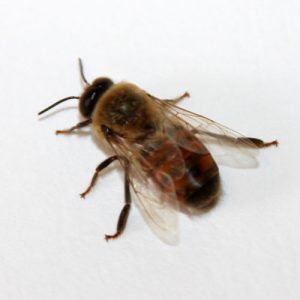
Drone Bee
The drone bees wait in a queue in the summer waiting to mate with a virgin queen. The drone, on account of its a barbed sex organ, dies after mating. In a single hive there are 300 to 3,000 drones. The stinger is absent in the drone, since they are useless in the winter. At autumn they are not allowed to enter the hive.
Threats To Bee Keeping
Mites
Two types of mites (Tracheal and Varroa) are the biggest threats to bee keeping. Even though an unrelenting bee keeper controls these mites, the negative effect on the honey bee affects the number of inhabitants. According to the survey conducted by the members of the The Back Yard Bee Keepers Association more than 40% of the membership’s hives collapsed in 1996. In the USA these mites cause a very big decrease in the honey bee population. Other than the harm that the mites cause to honey production, they have no effect on humans.
Disease
Beekeepers are on the search of diseases of different types that do not harm humans but exclusively harm honey bees. “Nosema” and “Foul Brood” are the two diseases identified. Proper management and good medication will eradicate these diseases.
Urbanization
With the increase in the growth and development of cities leading to urbanization, the foraging opportunities for bees decreases to a great extent. Despite this, places like Fairfield County has a rich collection of pollen and nectar for honeybees. The lush wooded countryside and the home owners’ gardens appear as a boon to the bees.
Africanized Bees
In certain southern states there arrived the so-called “killer bees” ; this generated shock news in the media. This false rumor has agitated theauthorities to pass ordinances and create local restrictions on the hobbyist bee keepers.
Please Read Some More Amazing Facts on Honey Bees Below
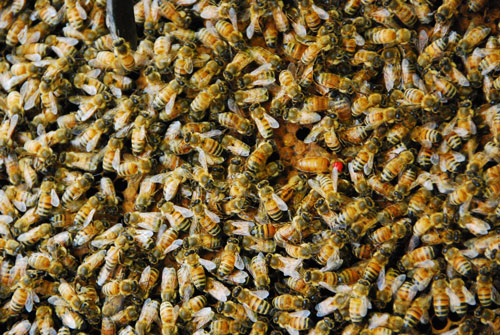
- Last year the Italian Agriculture Ministry along with Germany and France banned the use of nicotine-based type of pesticides.
-
New Clarification on Bee illness –
as per studies, a disease that is devastating the honeybees for more than three years in the US is apparently not one virus, but a multitude of viruses that diminishes the ability of the bees to produce proteins that gives them the stamina against any illness.
Pesticide Exposures affecting bees at Home and in the field
At times, numerous pesticides roll up into one model of pollen or wax. The number of missing honey bees since 4 years is disastrously intensifying. A fast survey conducted by the federal government demonstrates that this winter, a heavy number of honey bee died-off. Oher latest studies reveal the abundant presence of pesticides in bee hives, pollen as well as honey bees. Researchers illustrate that there is a gene that assists the honey bees to select either from pollen or nectar.
-
Cell Phone Tower Threat to Honeybees
David Element’s Wildlife Web Page states that a latest study in India indicates that the electromagnetic waves emitted by the towers of mobile phones and cell phones are posing a threat to the honey bees.
-
Honey Bees Heat Secrets Revealed
Latest research indicates that honey bees keep up accurate temperature inside their hives to distinguish the tasks of the young bees in the hive when they grow up.
-
How To Capture and Mark a Queen
Without a queen, the hive perishes quickly! Beginners do not understand how vital it is to possess a healthy queen in the hive, and the speed at which the hive perishes on the death of the queen is amazing. Of course, the colony of bees will make efforts to bring up a new queen, but for this, a lot procedures need to go on stream correctly.
-
Man Dies After Disturbing a Beehive in Miami
Since of late, the Miami-Dade Police reported an attack by a deadly swarm of bees that killes a 61-year-old Jorge Luis Acosta, after he agitated a bee hive.
-
New revelations on Mass Death of Bees
By the end of the year 2006 strange things started to take place to the American honey bees. All of a sudden, overnight the flourishing bee hives came to a standstill. The worker bees that used to make hive just disappeared and even their bodies were not found.
-
Blue Honey from North Carolina Bees
Beekeepers around the Sandhills of North Carolina struck blue gold. When you pry and open the box of the active beehives within some weeks, the sweet sticky yield has a clear azure hue: blue honey, a result of the hunger of bees as well as nature.
-
Rooftop Farming in New York
In order to practice their passion of beekeeping the beekeepers and agriculturalists have turned the Urban farming a growing industry on the roof tops of the concrete jungle of New York city.
-
Causes of Bee Colony Disorder
The confirmation given by the latest research at Washington State University states that the a microscopic pathogen as well as the pesticides in the old honeycombs are the two main contributors to the bee disease called the colony collapse disorder that washed away thousands of beehives all over Europe and the United States.
-
Honey in the Medical Field
In recent times there is a great rush of interest in honey in the medical field. Honey was a traditionalingredient used in healing wounds.
- You find Honey bees as “families” of great numbers the world over. Honey bees are the only social insect that can survive for several years. The reason for this is that they cluster together in order to be alive during the cold winter months.
- Honey bees pollinate more than 100 crops in the US.
- In a minute they flap their wings 11,000 times, this explains the “buzzing” sound. Honey bees sting only once, their stingers tear away once they sting anything.

Having discovered a fondness for insects while pursuing her degree in Biology, Randi Jones was quite bugged to know that people usually dismissed these little creatures as “creepy-crawlies”.

